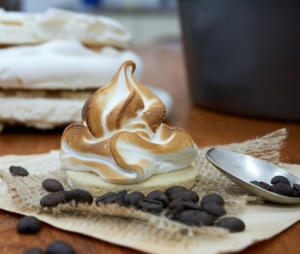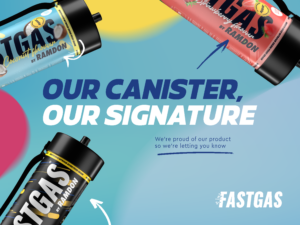Nitrous Oxide In The Medical World
Nitrous Oxide, commonly referred to as N2O; what it is, and what is it used for?
N2O, also known in the chemical world as nitrous oxide, has established itself in both the medical world and the food industry thanks to its useful functionalities. Whereas N2O is mainly used in the health care sector as a sedative and painkiller, it is mainly used in the food industry as a propellant to guide cream out of the spray cans intended for this purpose.
The difference between nitrous oxide intended for medical purposes compared to the food industry is that it is cleaned extra carefully to make it as sterile as possible.
N2O is ideal for the food industry, this is partly due to the fact that nitrous oxide has almost no taste. In addition, the filled N2O cream charger of Fast Gas makes it very easy to use in any kitchen.
The European Union has characterized nitrous oxide as an E-number (E942). This means that it is permitted at the European level to use nitrous oxide as an additive in food.
Last, but certainly not least, nitrous oxide has recently found a new use for the functionalities it carries. N2O has recently been used in the production of electronic chips. In this industry, as in the medical world, nitrous oxide is of a very high sterile and pure level.
The history of nitrous oxide
Nitrous oxide was discovered in 1776 but not immediately deployed. It wasn’t until about 20 years later that an employee of the Pneumatic Institute in Bristol experimented with it. This was Dr. Humphry Davy, he was researching at the Institute how gases, including nitrous oxide, could be used in a therapeutic way. Humphry Davy invited friends to try nitrous oxide so he could observe their reactions.
During these parties, Davy asked his friends to write down their experiences and he collected their responses this was then published in 1800. In this way, Davy tried to better understand the human brain. Peter Mark Roget noted at the party, “I seemed to lose the sense of my own weight, and imagined myself sinking into the ground.” And the poet Samuel Coleridge describes a state of calm ecstasy, “like returning from a walk in the snow in a warm room.”
Davy collected some 30 responses and descriptions of his friends’ experiences. These parties led to one of the most important medical breakthroughs of the 19th century, in fact Davy was the only one to realize at the end of the 18th century that nitrous oxide has an analgesic and narcotic effect.
An American dentist Horace Wells, realizing that nitrous oxide had a narcotic effect, decided to administer nitrous oxide to a patient for the removal of a tooth. He was so impressed with the narcotic effect that he shared this experience with surgeons and advised them to use nitrous oxide when treating their patients. Unfortunately, this did not have the same effect for every surgery; a lot of surgeries are much more painful and long-lasting than removing a tooth. “He didn’t get the dose right and it was a complete disaster, so nitrous oxide was banned as a result,” says Barry Baker, professor emeritus at the University of Sydney and a former cardiovascular anesthesiologist.
A colleague of Wells, who had witnessed the failed surgical experiment, suggested to another dentist, William Morton, that ether might be a better anesthetic than nitrous oxide. After experiments on his dogs and himself, in 1846 he performed a successful demonstration of public surgery using ether as an analgesic. This was the launch of anesthesia.
Nitrous oxide has now been used in the medical field for over 200 years. It can be used both as anesthesia and sedation. So in addition to sleep, nitrous oxide also provides pain relief
Nitrous oxide and the medical applications
In the medical world, nitrous oxide is primarily used for anesthesia and pain relief. As a result, we know of several areas of application that are used more frequently. In anesthesia, in delivery rooms, in palliative care, and at the dentist.
Nitrous oxide usage in healthcare
The fact that the MAC value of N2o (laughing gas) is 101% means that it can only be administered in combination with other gases (e.g. oxygen) for complete anesthesia.
Examples of N2O use in healthcare
We have already briefly mentioned anesthesia, which is the process of putting patients under anesthesia. This happens, for example, before an operation. It is additionally used in the delivery room or in the emergency room. Now it is mainly intended as an analgesic. The dentist can also use it for this reason.
What exactly is a MAC value?
The MAC value, Minimum Alveolar Concentration, is a value at which 50% of the people it is tested on will no longer respond to a surgical stimulus. When the MAC exceeds 100%, it will always need to be administered in combination with other gases for complete anesthesia.
Nitrous oxide benefits in healthcare
it is one of the safest ways of using medical gas.
The gas acts very quickly on patients because it is absorbed quickly by the body.
breathing is better maintained in patients by nitrous oxide than by comparable anesthetics.
Nitrous oxide usage in the food industry
N2O applications in the food industry
No matter which chef you ask, they will all agree that nitrous oxide is now indispensable in their kitchens. The pressure of nitrous oxide is used to make dishes airier. This is because nitrous oxide has no smell, color, or taste, making it very suitable for this application.
Nitrous oxide usages in the (professional) kitchen?
Using a siphon and cartridge, you quickly air the dish. However, with the new solution from the Fast Gas cream charger, a handy cylinder is used. This eliminates the time cooks lose changing cream cartridges, and is also more environmentally friendly.
As opposed to the traditional single charge cream cartridges, the cream charger cylinders save roughly 20% on metal wastage, as well as saving you time as a single cream charger cylinder is the equivalent of 70+ single cream cartridges,
What kind of dishes can you make with the help of nitrous oxide?
The best known and most used application on dishes is whipped cream. It is suddenly very easy to make whipped cream. So here is also no machine involved anymore. Fill the siphon with whipped cream, then connect the cylinder. The N2o is pressed with very high pressure into the liquid whipped cream. Now you can (after disconnection) immediately start spraying the whipped cream. Besides whipped cream, you can basically make all meringues in the same way. In all flavors and colors.
Can we also make other dishes than meringues with N2O?
Yes, you can! You can also use it to make Belgian waffles, for example. These are somewhat thick waffles with deep grooves. Using nitrous oxide makes the dough extra airy. Because there is no taste, color, or smell, your guests will be surprised! Another great tip is pancakes. In the same way, you can make a delicious batter.
So is this use suitable for a culinary kitchen?
If you eat in the culinary kitchen more often you will probably know that a lot of chefs work with meringues. These meringues come in all different colors and flavors. They are made of mushrooms, lemon or parmesan, for example. In this, it is very important that protein is added. Because of this addition, the foam will actually hold its shape permanently.
Nitrous oxide in the medical world and food industry, in short
First of all, what does nitrous oxide smell, taste, and look like? Nitrous oxide is also known as N2O. It is a gas without color, sweet-smelling and sweet tasting. When you inhale nitrous oxide, there is a drop in consciousness and you could compare it to when you have drunk a little too much alcohol. It is also still sometimes used in the emergency room or in the delivery room.
Nitrous oxide has been used for medical purposes since the 18th century to anesthetize patients for a short period of time. When used competently at the correct dosage, it has virtually no side effects. When used for a long period of time, about 2 to 4 hours it can have several side effects such as:
- acceleration of the heart rate
- breathing
- arrhythmias
- hypertension
- acute heart failure
- pupil dilation
- sweating
- spontaneous muscle contraction
What nitrous oxide does is shorten and inhibit the pain stimulus, it is a short-acting analgesic that is also widely used at the dentist or in the ambulance car. Nowadays, for procedures that last longer, other anesthetics are used.
Anesthesia is the process of putting patients under anesthesia. nitrous oxide is thus used as a weak anesthetic for anesthesia. nitrous oxide has a so-called MAC value of 101%. A MAC-value is also called Minimum Alveolar Concentration. This value is where 50% of the people no longer respond to a surgical procedure. If this value exceeds 100%, multiple agents must be administered for complete anesthesia. Thus, a MAC value of 101% for nitrous oxide means that multiple gases must be administered, in this case, oxygen.
The ratio of nitrous oxide to oxygen can be adjusted for each patient.
Nitrous oxide can be used in a variety of industries as just discussed it can be used well in the medical field, in the food industry it is used as a propellant, in automobile and motorcycle racing it is used to increase the power of internal combustion engines and it can be used in the kitchen for many different dishes.



